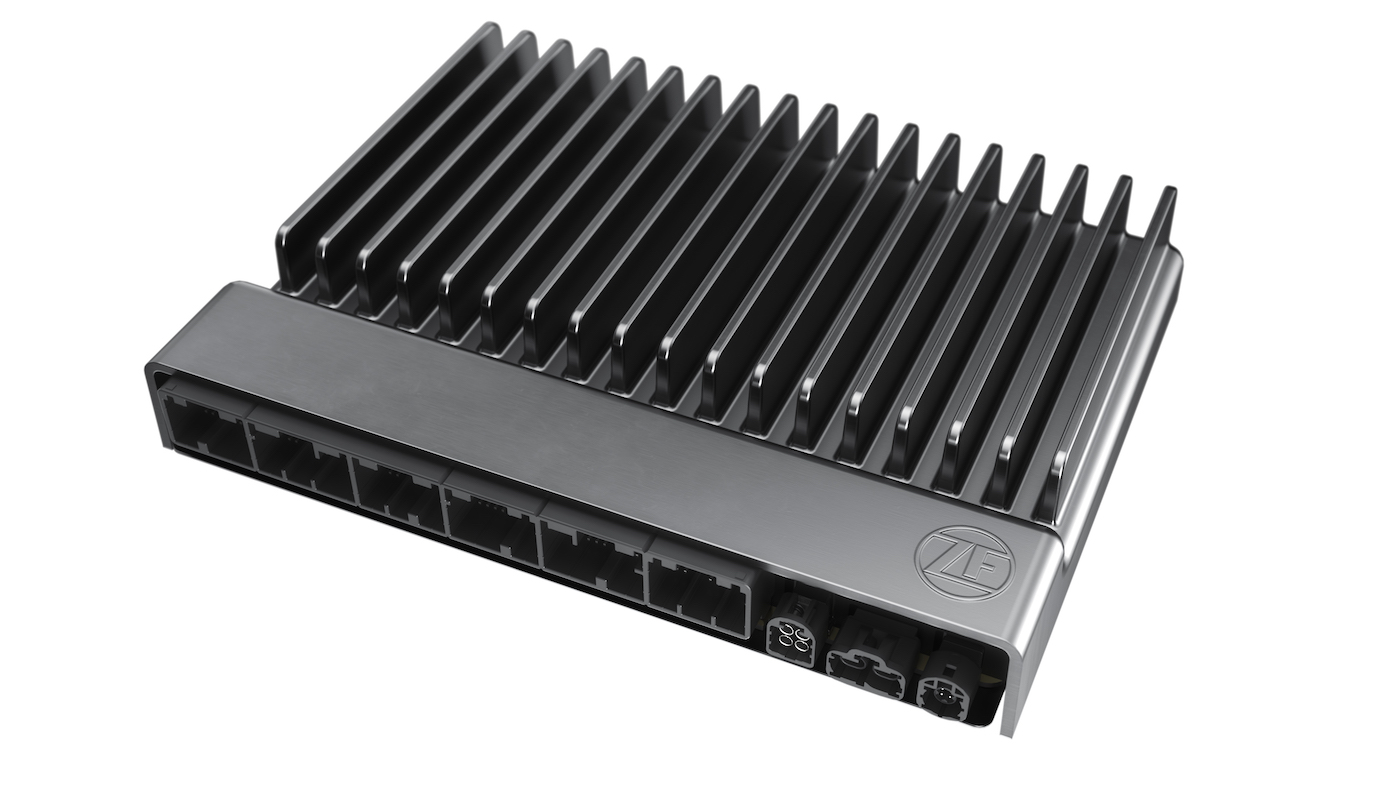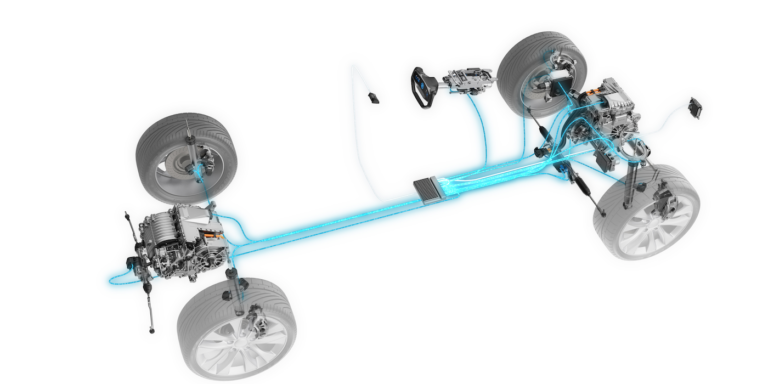ZF has revealed a high-performance computing platform – the Vehicle Motion Domain (VMD) Controller – at CES 2022 in Las Vegas, USA. The VMD Controller is a central computer adaptable for all types of chassis platforms, vehicle motion and body functions, next-generation software-defined cars, and future domain and zone E/E architectures.
A car’s ride and handling characteristics are largely defined by its chassis. Wheel guidance, damping, suspension, steering and brakes help determine the character of a vehicle, and the trend toward the electrification and software control of these systems (both piloted and autonomous) continues to accelerate.
The controller is designed to integrate vehicle functions across domains including body and power management, and to support standalone functionality while reducing complexity by using a single controller for intelligent vehicle motion control. The VMD Controller serves the software-defined vehicle trend with real-time functions and applications, with a high-performance threshold of 55,000 DMIPS (draystone million instructions per second).
For a higher level of automation, the controller can be connected to ZF ProAI, ZF’s computing platform for ADAS/AD applications.
André Engelke, ZF’s head of vehicle motion control systems stated at the reveal, “Customers today are choosing among a broader spectrum of technologies that require more sensing from integrated chassis sensors as well as other vehicle systems. Meeting the increased requirements of these increasingly sophisticated systems, which include redundant circuits, need higher-powered computing solutions.“
“That’s why we have developed the VMD controller, which we believe is currently the most flexible, scalable and powerful chassis domain high performance computer available,” Engelke added.

Supercomputers for a dynamic future
According to ZF the intelligence of future vehicles is likely to be controlled by a few extremely powerful central computers such as the VMD and the ProAI controllers. These computers run the computationally intensive software functions that control critical vehicle domains and help enable functions for automated driving, electric mobility, vehicle motion control and integrated safety. High-performance computers and intelligent software functions are key enablers for the software-defined vehicles of the future and can help bring safe and smart mobility experiences to contemporary consumers.
The latest generation of the ProAI supercomputer represents what ZF says is the next level of flexible, scalable and powerful automotive-grade supercomputer in the world. The new ZF ProAI has a 66% increase in computing power compared with the previous version, and consumes up to 70% less power. The core of new E/E vehicle architectures is formed by high-performance computers which can be used either as central, domain or zone controllers.





